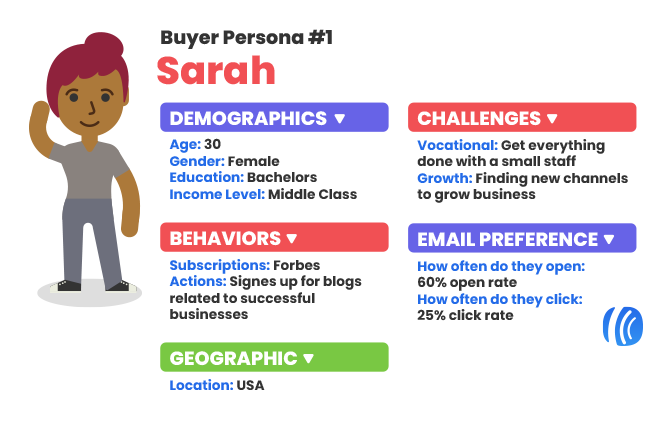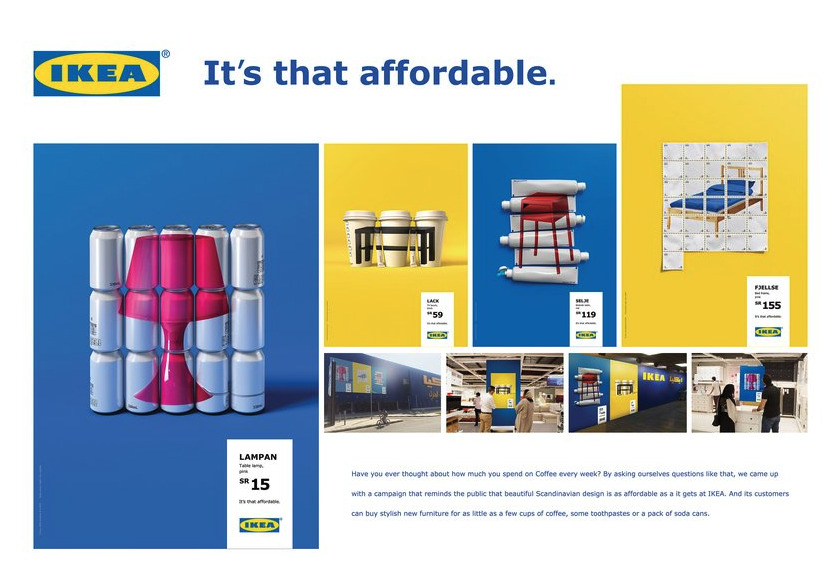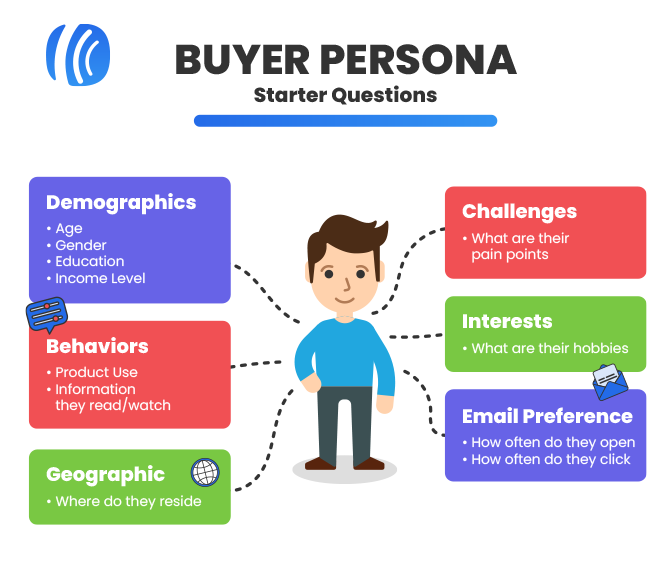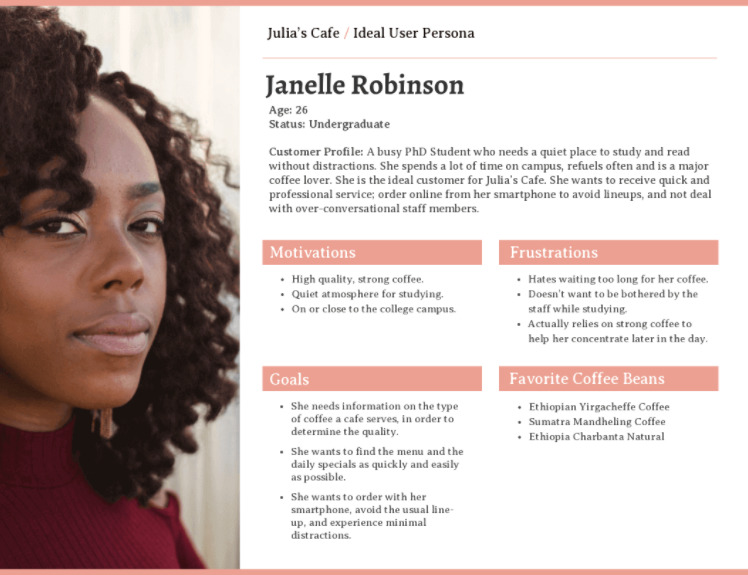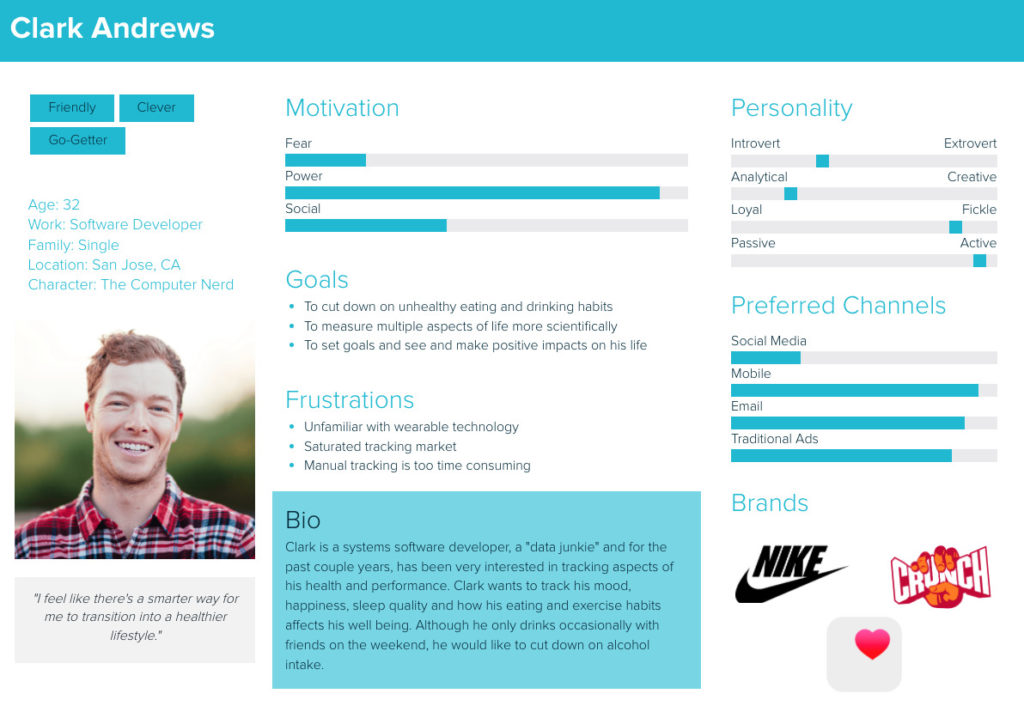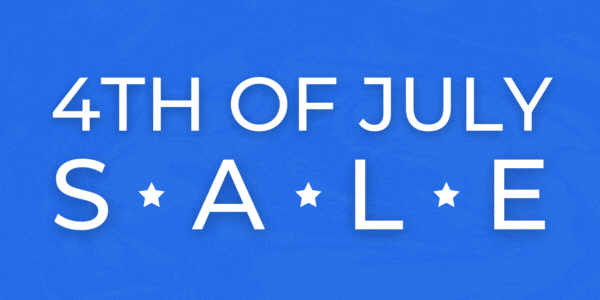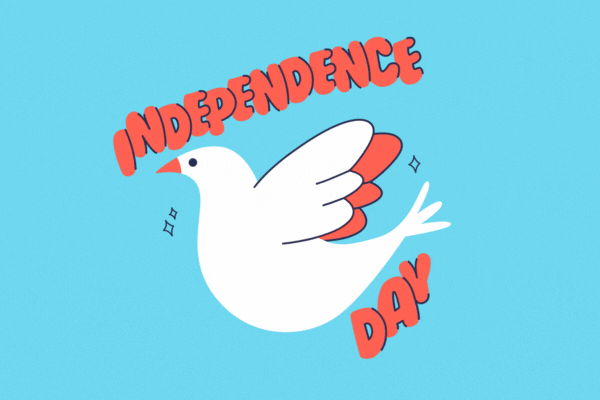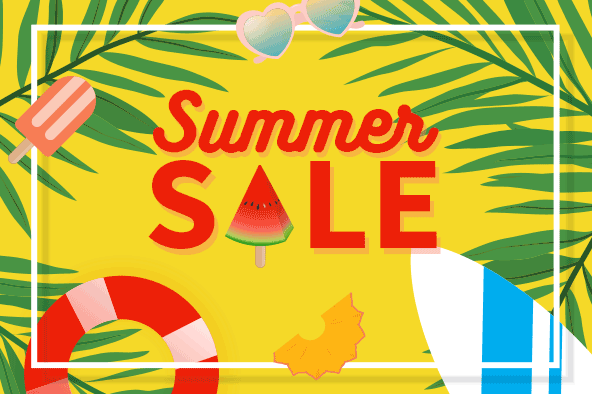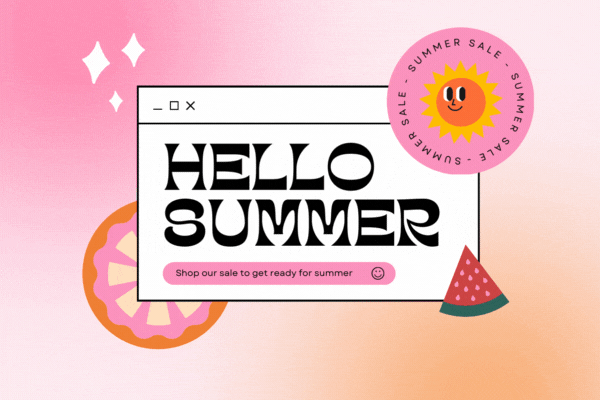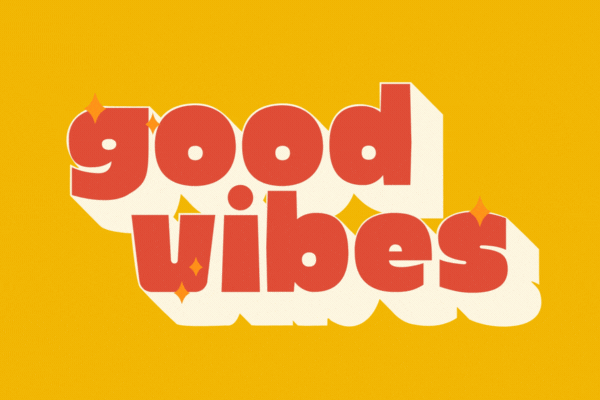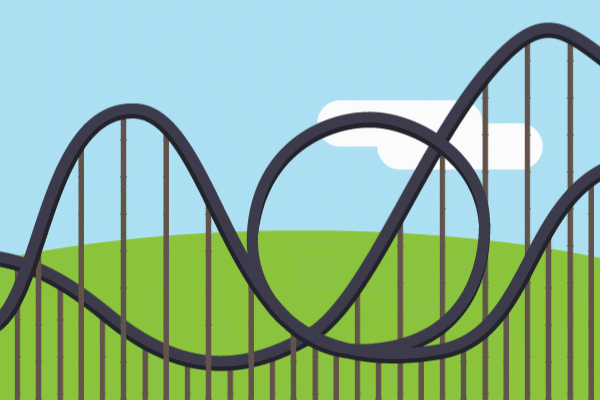
Email marketing continues to be one of the most powerful tools for growing your business. (Need proof? Check out stat #1 below.)
Although email marketing has been around for decades, it’s everchanging.
New email marketing tools — like AI in email— pop up all of the time. These new tools are helping us do our jobs better and more efficiently, and in turn impacting some of statistics in
I put together this comprehensive list of email marketing statistics that will help you see the importance of communicating with your audience using email.
Table of Contents for email marketing stats
Subscribers
Email open
Email clicks
Mobile usage
Return on investment
Frequency
Content
AI in email
Subject line
Personalization
Automation
What marketers say
What small business owners say
Subscriber email marketing statistics
- On average, consumers in America spend 5+ hours checking email on a typical weekday. – Adobe
- 99% of email subscribers check their email every day. - Optinmonster
- 58% of people check their email first thing in the morning - Optinmonster
- 51.4% of emails are opened on an Apple iPhone. - Litmus
- 49% of consumers state they would like to receive weekly promotional emails from their favorite brands. – Statista
- 61% of email subscribers would like to receive promotional emails at least once per week. – MarketingSherpa
- 61% of consumers prefer to be contacted by brands through email. – Statista
- 4.6 billion – estimated number of daily email users by 2025. – Statista
- 51% of online shoppers prefer email communications more than any other channel to receive promotions - eMarketer
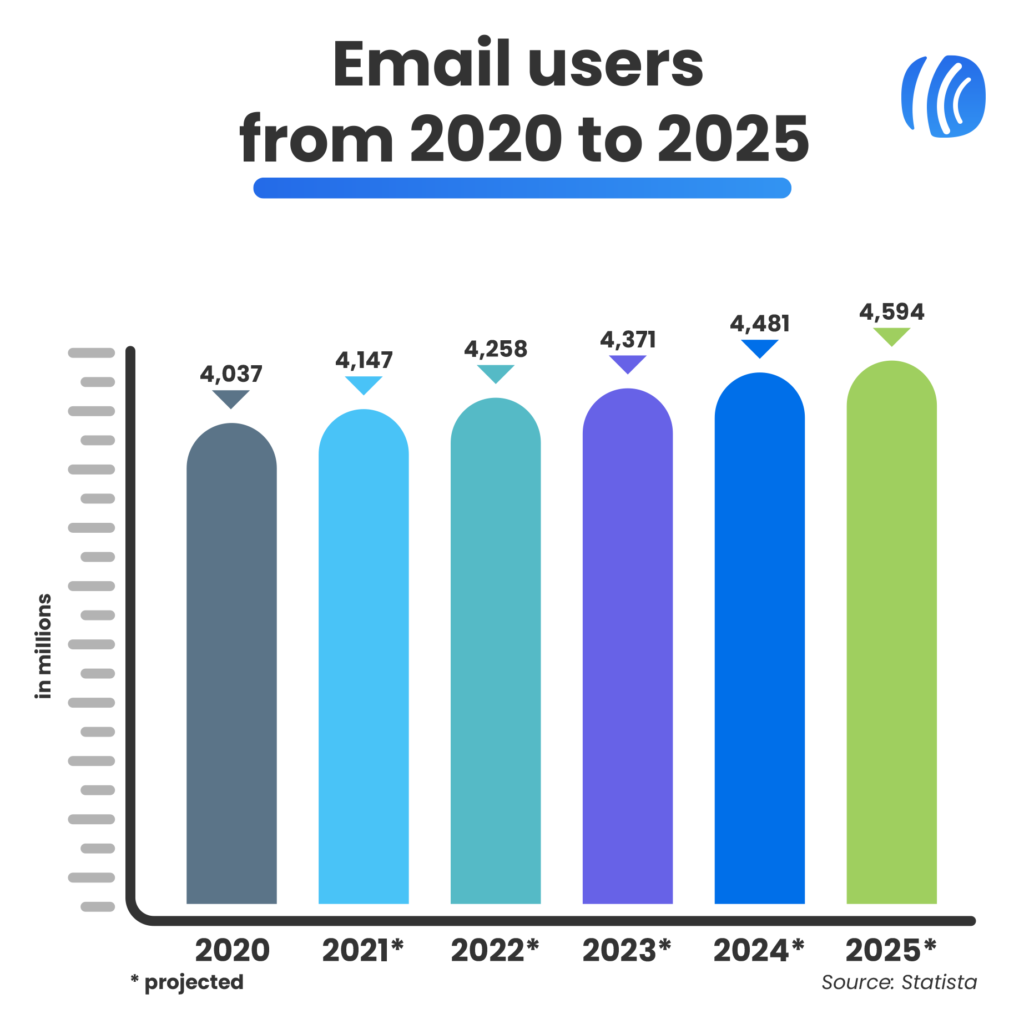
Email marketing open statistics
- 31.3% - 35.7% is the average open rate of an email - WPShout
- 42% of subscribers open based on the email sender name - Mirabel’s Marketing Manager
- Welcome emails have an open rate 2.5x times higher than other emails. – Oberlo
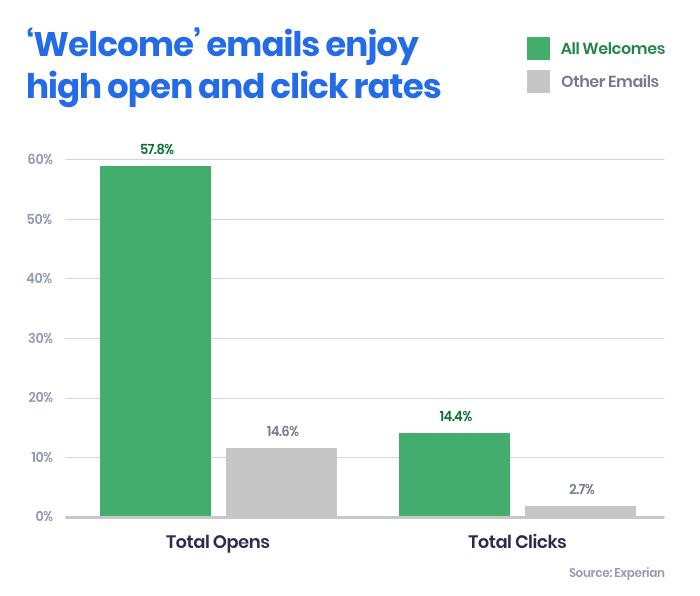
Email click statistics
- 77% of small businesses average email click-through rates between 1% and 10%. – AWeber
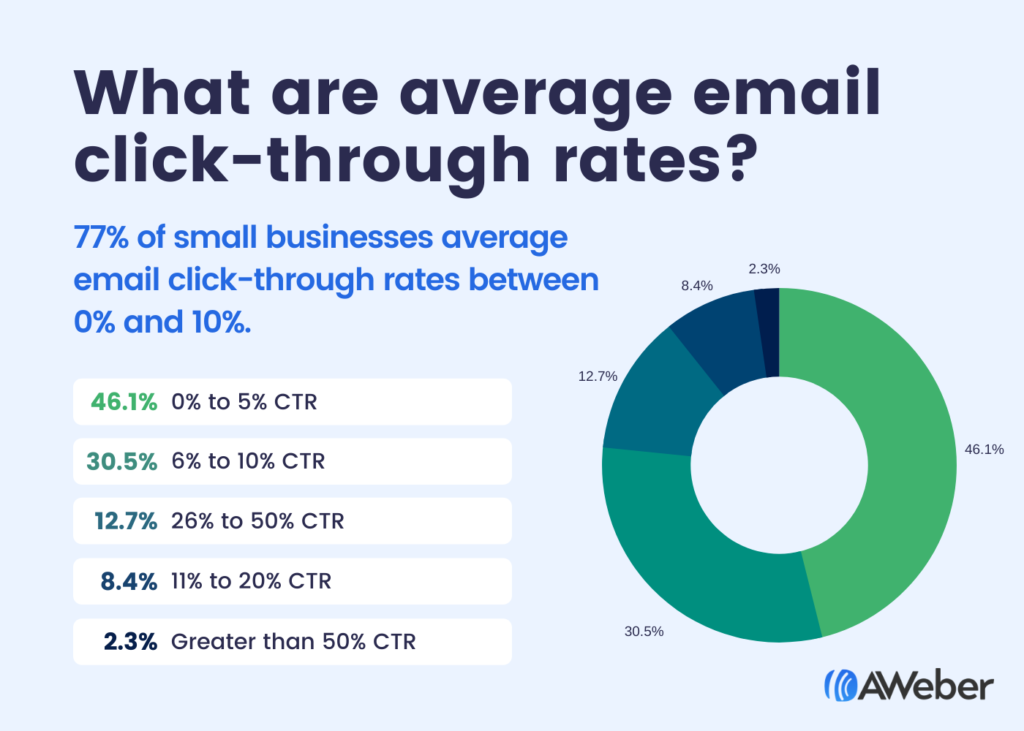
- 61% of small businesses with effective or very effective email copy have click-through rates of 6% or higher. – AWeber
- The average open rate for abandoned cart emails is 39.1%. – Hotjar
- You can increase your click-through rates by 300% when you add a video to your emails. – Martech Advisor
Mobile device statistics
- 46% of emails are opened on mobile devices. – Litmus
- 40% increase in clicks when emails are optimized for mobile - Cognism
Email marketing ROI statistics
- Companies average a return on investment of $36 for every $1 spent on email marketing. – Litmus
- Email marketing is 40 times more effective at acquiring customers than Twitter and Facebook combined. – McKinsey
Send frequency statistics
- 54% of small businesses send emails at least once per week. - AWeber
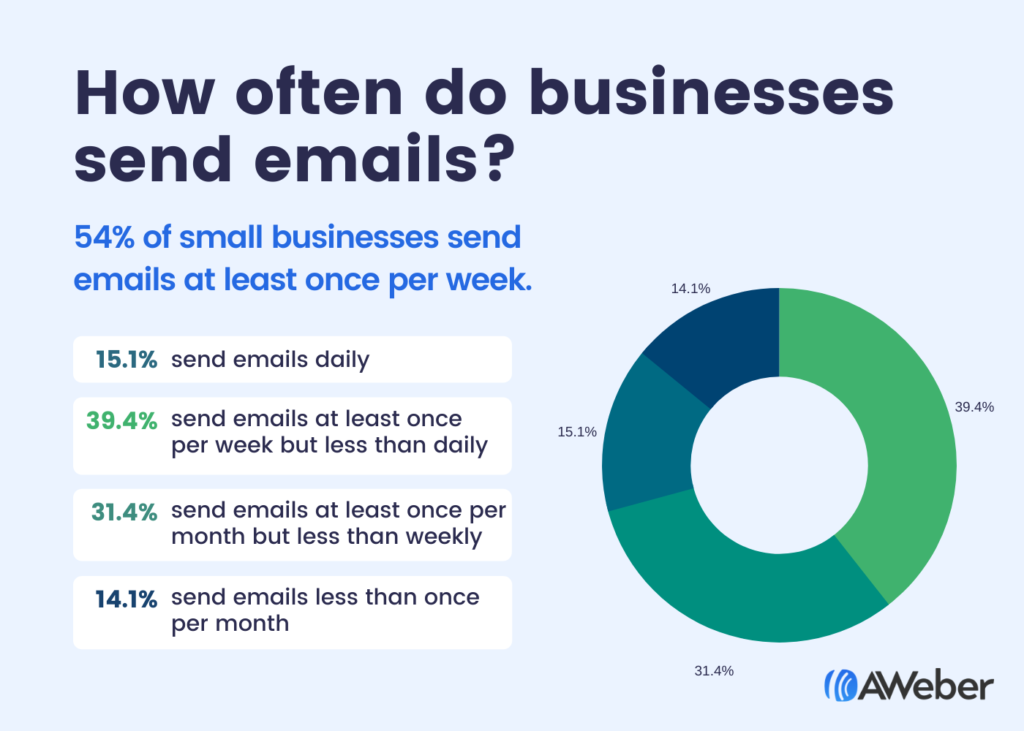
- 347 billion emails were sent and received each day. - Statista
Email content statistics
- 64% of small businesses say their email copy is effective or very effective. - AWeber
- 94% of small businesses write their own marketing emails instead of outsourcing their copywriting. - AWeber
- On average, emails contain 434.48 words. - AWeber
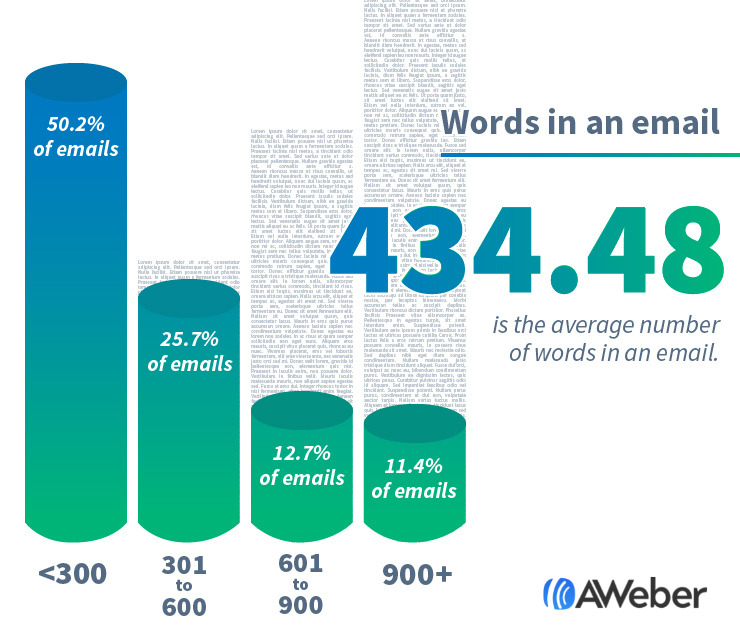
- The average email takes 3.3 minutes to read. - AWeber
- 50% of emails contain less than 300 words. - AWeber
AI in email statistics
- 51% of business believed that using AI in email was more effective than traditional emails - Statista
- 41% of businesses say that AI leads to higher revenue generation from marketing emails – Litmus
- 35% of marketing professionals stated using AI in some capacity in their email campaigns - Ascend2
Email subject line statistics
- Email subject lines contain 43.85 characters on average. - AWeber
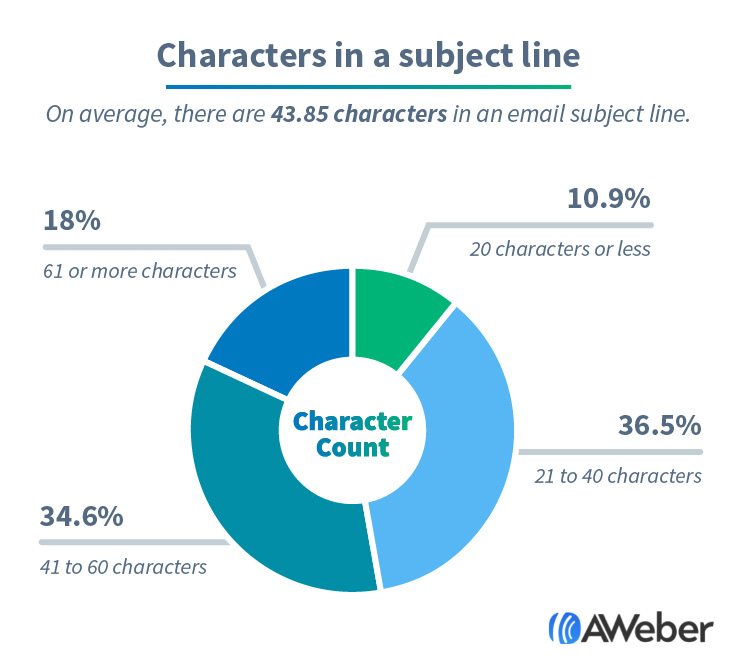
- Only 6.9% of email subject lines contain emojis. - AWeber
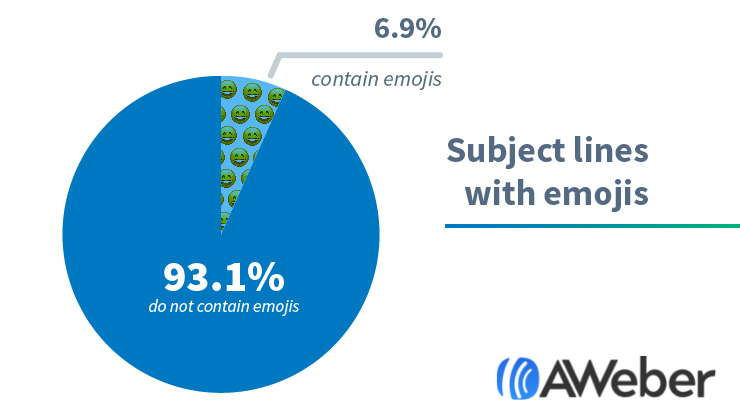
- 60% of email subject lines use sentence-case capitalization, 34% use title-case capitalization, and only 6% use all lowercase capitalization. - AWeber
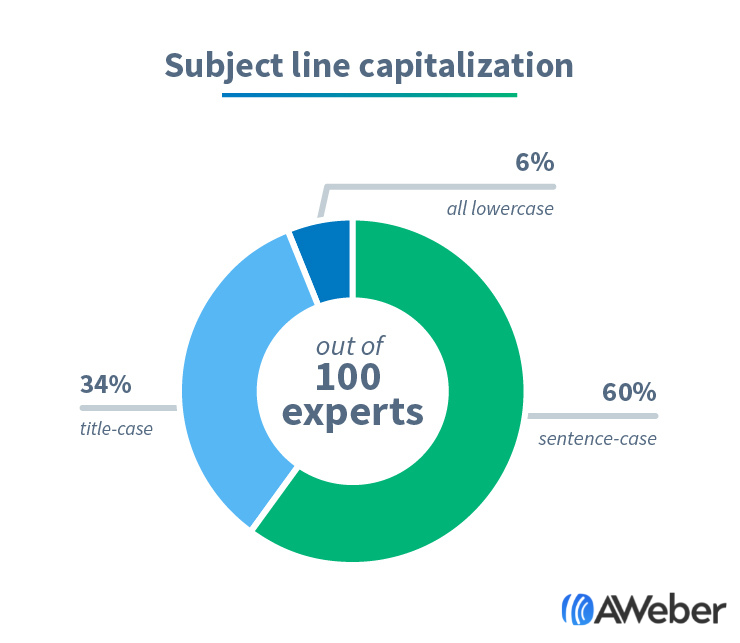
- 31% of email senders use personalization in their subject lines - Gartner
- 47% of email recipients open an email based on the subject line alone. - OptinMonster
Email marketing personalization statistics
- 82% of email opened more often when using personalization compared to non-personalized emails - G2
- 86% of consumers stated they would share their email address in exchange for personalized experiences and exclusive incentives - Airship
Email automation statistics
- 64% of businesses use email automation to improve their marketing processes. – Email Monday
- 31% of email orders is generated through an automated email - Exploding Topics
What marketers say about email
- 31% of marketers say email newsletters are the best way to nurture B2B leads. – Content Marketing Institute
- 64% of B2B marketers use a dedicated email marketing platform. – Content Marketing Institute
- 40% of B2B marketers claim that email newsletters are the most important tactic in their content marketing strategy. – Content Marketing Institute
What small business owners say about email marketing
- 79% of small businesses say email marketing is important to their business strategy. - AWeber
- 60% of small businesses say their email marketing strategy is effective or very effective. - AWeber
- 43% of small businesses have 500 or less email subscribers. - AWeber
- 42% of small businesses with over 500 subscribers have effective or very effective email marketing strategies. - AWeber
The post 45+ Mind blowing email statistics you should know appeared first on AWeber.
from AWeber https://ift.tt/Qb5Sdip
via IFTTT

